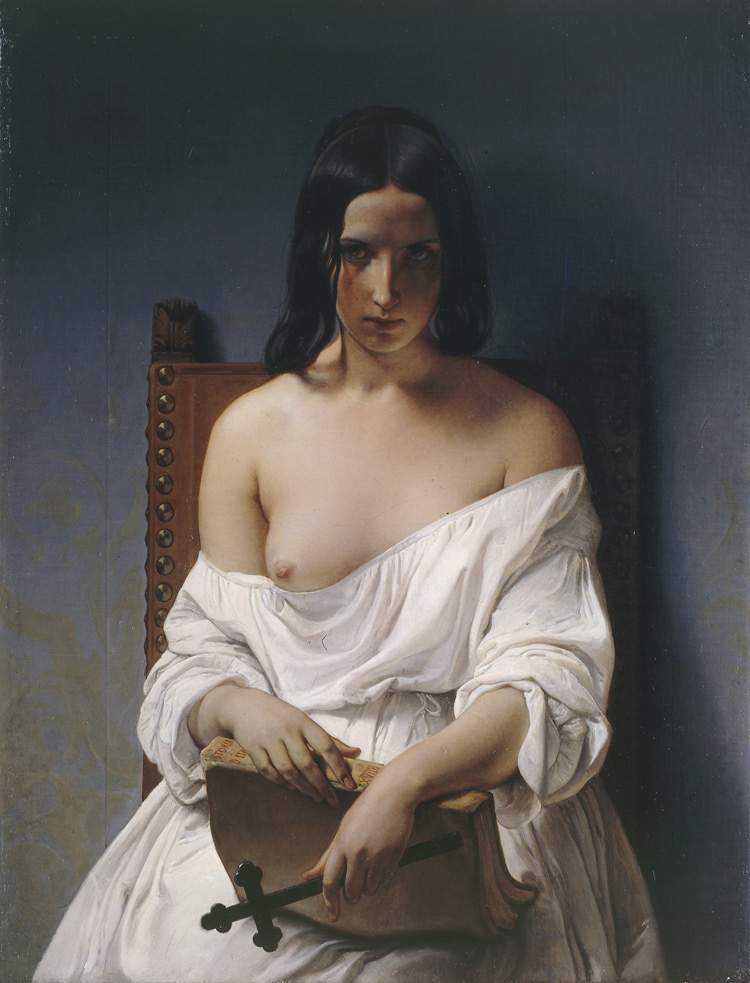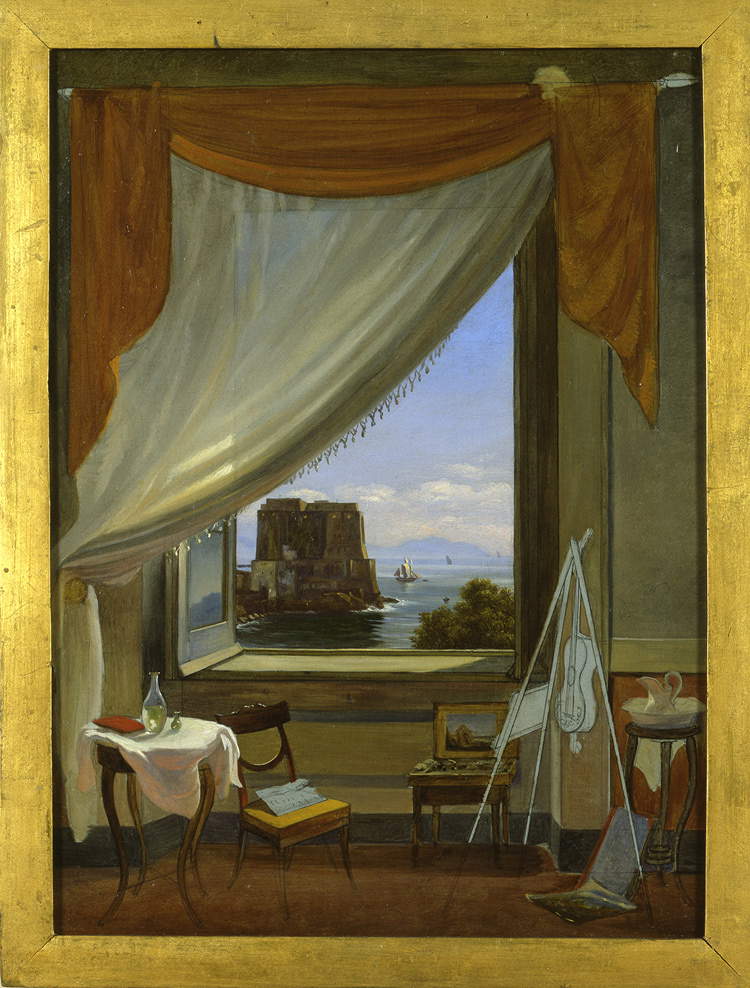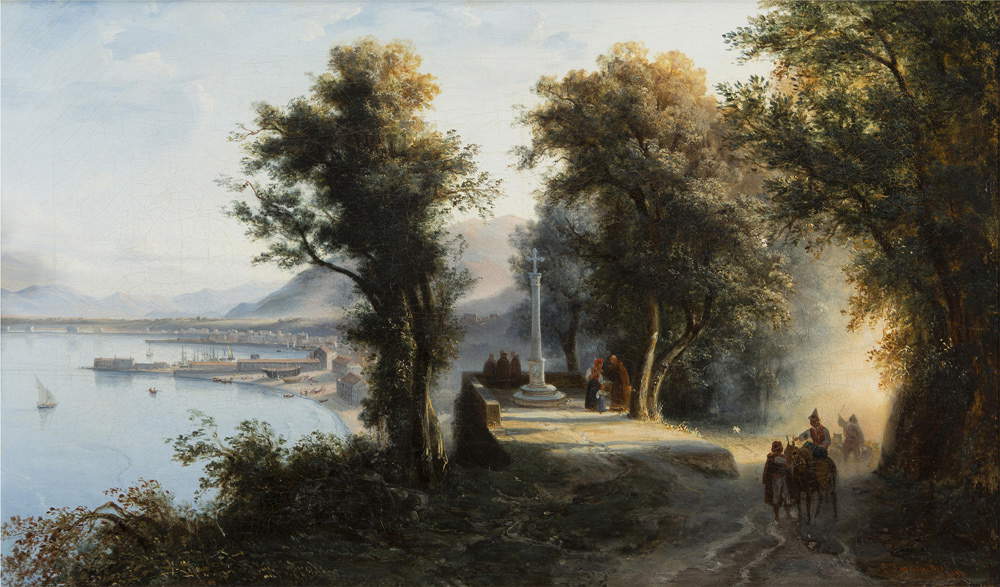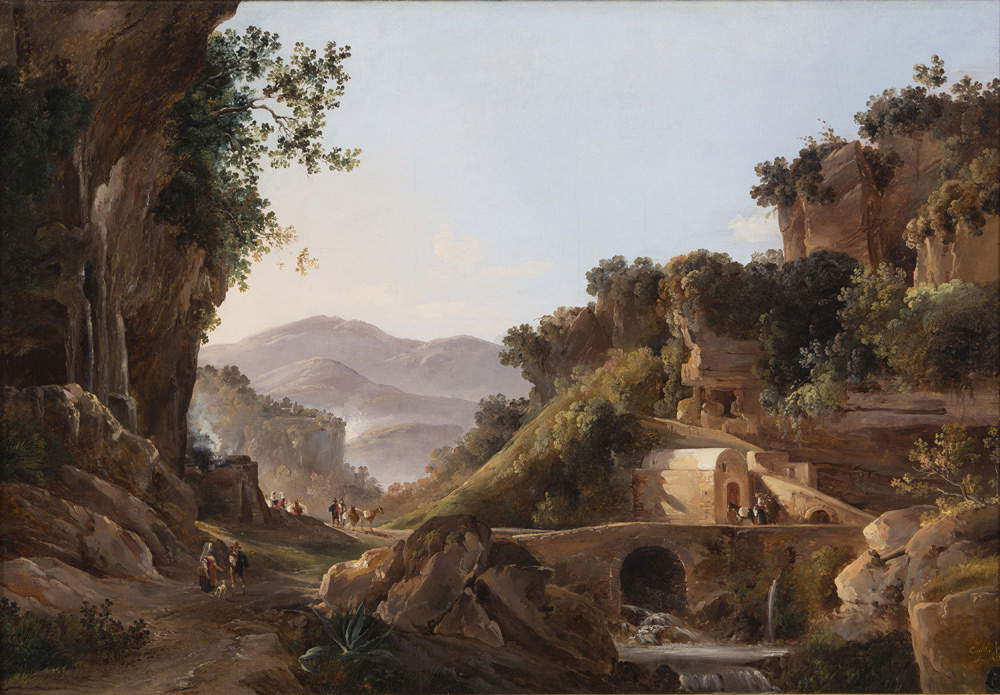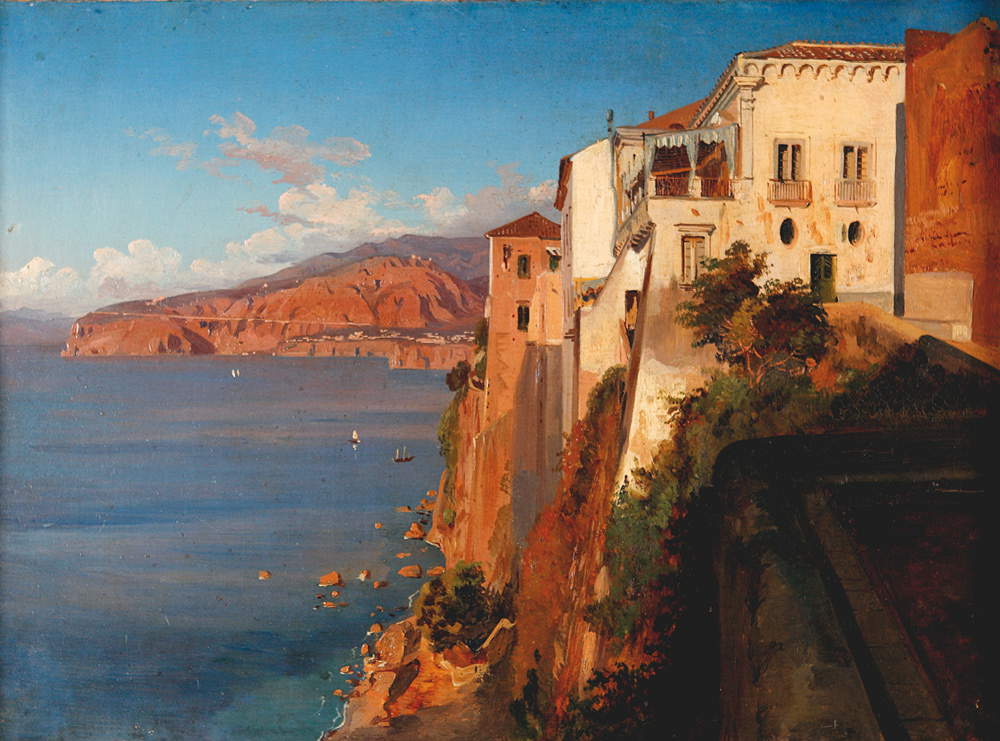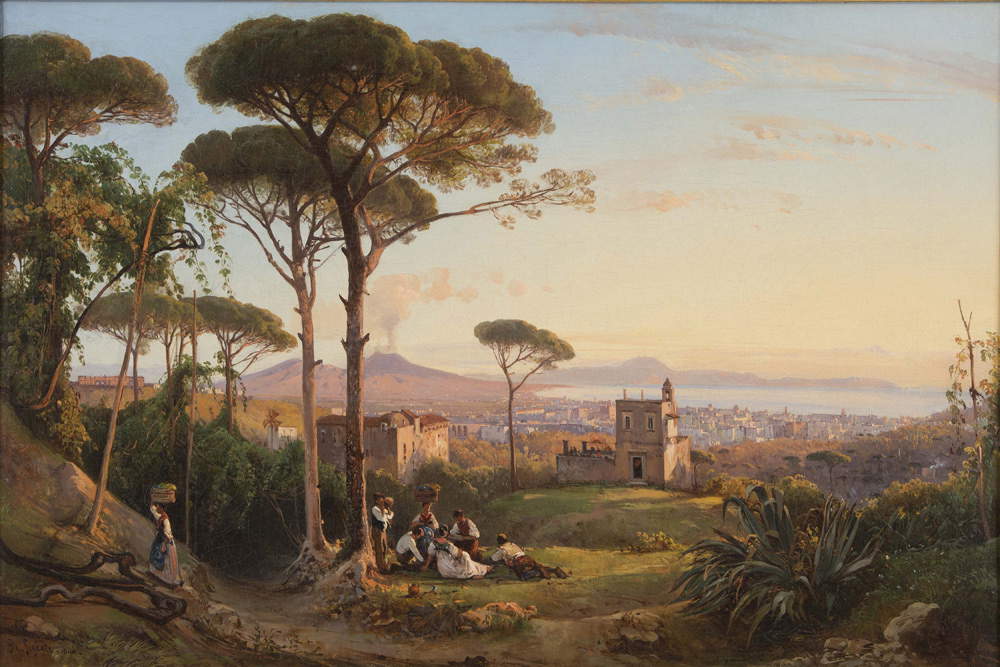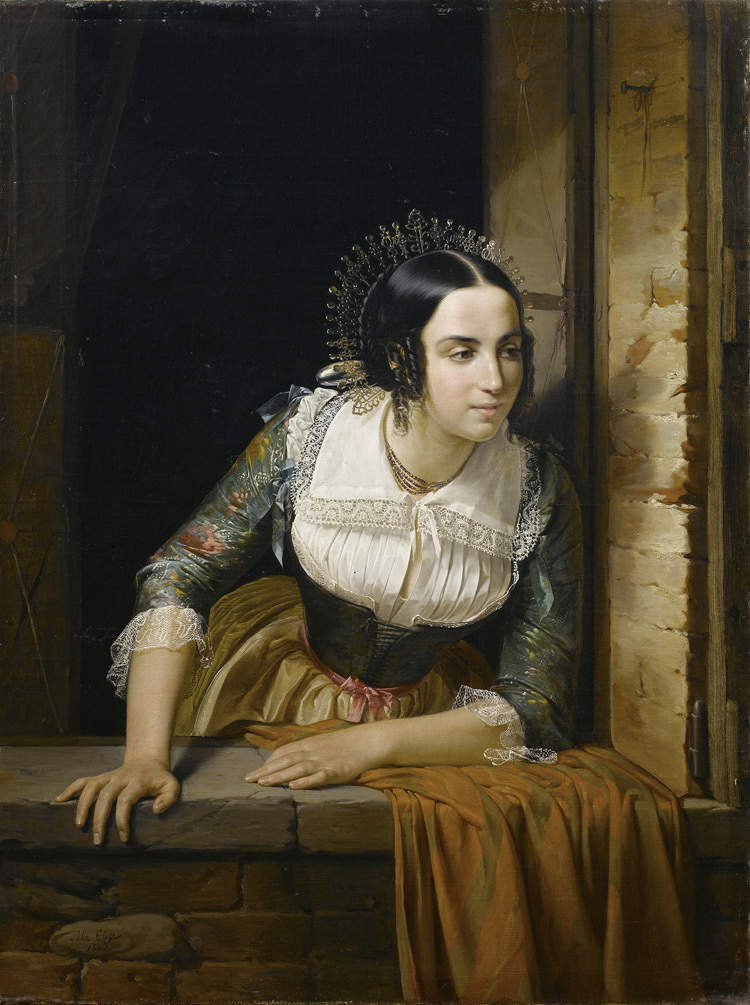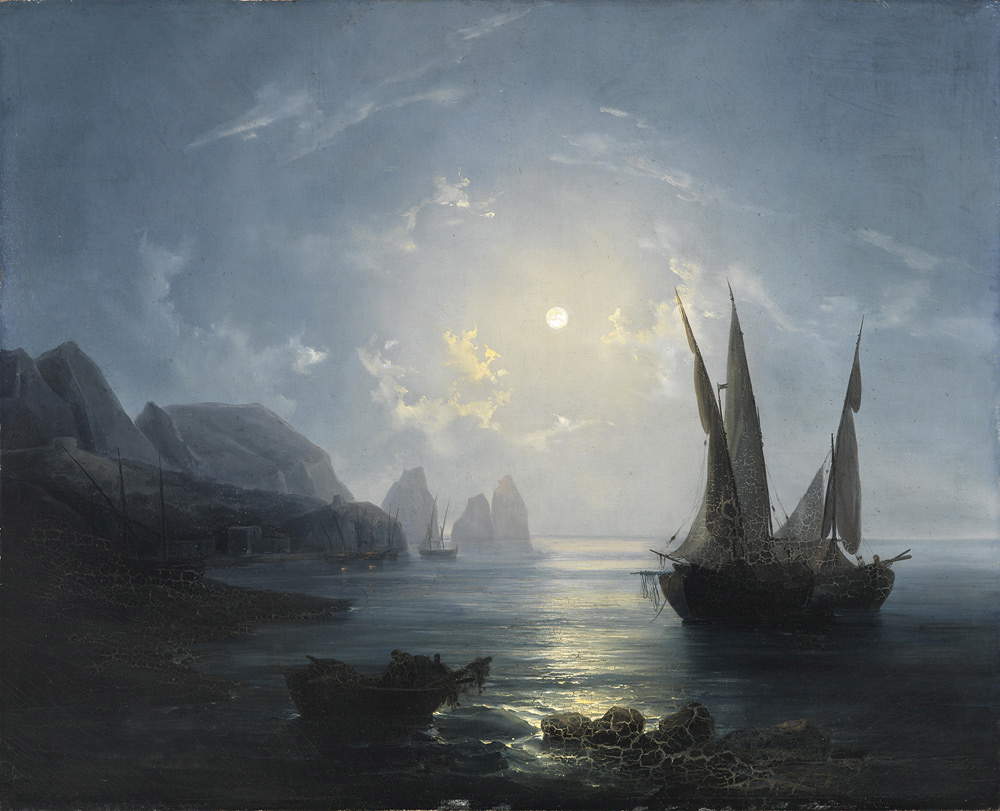by Redazione , published on 11/09/2018
Categories: Exhibitions
/ Disclaimer
In Milan, Gallerie d'Italia and Poldi Pezzoli host the exhibition 'Romanticism,' from October 26, 2018 to March 17, 2019. Here are photos of the works
The Gallerie d’Italia in Milan ’s Piazza Scala and the Poldi Pezzoli Museum are dedicating their 2018-2019 winter exhibition, from October 26, 2018 to March 17, 2019, to ItalianRomanticism: it’s Romanticism, an important exhibition, curated by one of the leading experts on the subject, Fernando Mazzocca, which takes the form of the first exhibition entirely dedicated to Italy’s contribution to the Romantic movement and which displays no less than two hundred works, which are set in the context of the lively cultural debate that took place between England, France and the northern countries, especially Germany and the Austrian Empire, in the years from the Congress of Vienna to the revolutions that shook the old continent in 1848. The exhibition also considers the earlier pre-Romantic ferments and the last manifestations of a culture that, at least in our country, would end with the realization of theUnification of Italy and the rise of Realism, which of Romanticism represents the antithesis.
The exhibition finds fertile ground in Milan because the Lombard capital was the Italian city that, more than any other, had a European vocation during that period, and was an important center of Romantic civilization, both in terms of the figurative arts and in terms of literature and music: Just think of the annual art exhibitions held in those years at the Brera Academy, its publishing ventures, its theaters, including La Scala and Carcano, and the leading figures who inhabited it, such as Ugo Foscolo, Alessandro Manzoni, Gioacchino Rossini, Francesco Hayez, and Giuseppe Verdi.
Romanticism is divided into seventeen sections, twelve at the Gallerie d’Italia and five at the Poldi Pezzoli Museum, which restore the decisive break that occurred in the hierarchy of genres whereby some of the areas previously considered “minor,” such as landscape, portraiture, and the depiction of the life of the people, assume the same interest and importance as sacred and history painting, traditionally placed in first place and from that moment completely renewed. On display are many works by some of the protagonists of this new interpretation of reality, such as Francesco Hayez, Ippolito Caffi, Giacinto Gigante, Giovanni Carnovali known as il Piccio, Domenico and Girolamo Induno, Angelo Inganni, Giovanni Migliara, Massimo d’Azeglio, Giuseppe Pietro Bagetti, Luigi Basiletti, Giuseppe and Carlo Canella, Giovanni Battista De Gubernatis, Salvatore Fergola, Giuseppe Molteni, Natale Schiavoni and others. The installations, among moments of strong scenographic impact, aim to emphasize the dialogue between painting and sculpture: the latter, represented in the exhibition by several works including those of three extraordinary masters (the Tuscan Lorenzo Bartolini, the Apuan Pietro Tenerani and the Ticino-born Vincenzo Vela), having abandoned the ideal beauty of mythology and ancient models, now confronts not only the real, but also the unseen paths of literature and history.
Space then is given to the works of foreign artists to place the works of Italian masters in the context of the time: so here are the works of Caspar David Friedrich, Franz Ludwig Catel, Joseph Mallor, William Turner, Jean-Baptiste-Camille Corot, Sil’vestr Feodosievič Šcedrin, Franz Vervloet, Lancelot-Théodore Turpin de Crissé, Karl Pavlovič Brjullov, Friedrich von Amerling, Ferdinand Georg Waldmüller, and Léopold Robert, will serve to clarify the relations that existed, thanks precisely to these protagonists present and active in Italy, between Italian and European Romanticism. And again, a number of costumes from La Scala, from the most famous 19th-century operas (Nabucco, Anna Bolena - worn by Maria Callas -, Lucia di Lammermoor) and a rich video apparatus, with clips from the operas and films inspired by them and/or the Romantic climate in general, will tell the story of the cultural success that continued into the 20th century. All this will be accompanied by an illustrated catalog (published by Silvana Editoriale) with essays by the curator and by Virginia Bertone, Omar Cucciniello, Lavinia Galli, Sabine Grabner, Stefano Grandesso, Francesco Leone, Isabella Marelli, Luisa Martorelli, and Susanna Zatti, dedicated to the themes addressed in the exhibition and fact sheets devoted to the sections into which it is divided.
“In recent years, the Gallerie d’Italia, our museum in the heart of Milan, has presented masterpieces from various periods, attesting to Intesa Sanpaolo’s commitment to promoting culture and knowledge of the country’s extraordinary art heritage,” says Giovanni Bazoli, chairman emeritus of Intesa Sanpaolo. “From Hayez, to Bellotto and Canaletto, to the Last Caravaggio, the major exhibitions hosted at the Gallerie d’Italia have stood out for their high scientific profile, uniqueness and international scope. This is further confirmed by the new fall exhibition, the first review dedicated to the original contribution made by Italy to European Romanticism and in which Milan was an absolute protagonist. In collaboration with a prestigious institution, the Poldi Pezzoli Museum, through 200 works from major national and international museums, the itinerary illustrates an exciting artistic and cultural season that saw Italy confront modernity in search of a new identity.”
“Romanticism, of which Milan was the undisputed protagonist in Italy,” Gian Giacomo Attolico Trivulzio, president of the Poldi Pezzoli Museum, explains instead, “finds in the Poldi Pezzoli Museum an extraordinary ’immersive’ representation: visitors will walk through the rooms of Gian Giacomo Poldi Pezzoli’s palace (a protagonist of nineteenth-century culture) to discover the paintings and sculptures of the exhibition, finally reaching the Wunderkammer dedicated to Dante, one of the most emblematic and fascinating surviving testimonies of Romanticism in our country. It will not only be an artistic exhibition, desired and organized with extreme expertise by the Gallerie d’Italia and curator Fernando Mazzocca, together with the Poldi Pezzoli Museum, but the fresco that portrays the cultural life and daily atmosphere of the city in the central decades of the 19th century.”
Exhibition hours: at Gallerie d’Italia daily except Monday (closing day) from 9:30 a.m. to 7:30 p.m., Thursday closing at 10:30 p.m. At Poldi Pezzoli daily except Tuesday (closing day) from 10 am to 6 pm, Thursday closing at 10:30 pm. Tickets: 10 euros (one venue only), 7 euros access to second venue (upon presentation of first admission ticket). Below is a selection of photographs of the works on display.
 |
| Francesco Hayez, The Meditation (1851; oil on canvas, 92.3 x 71.5 cm; Verona, Galleria d’Arte Moderna “Achille Forti”) |
 |
| Massimo D’Azeglio, The Painter’s Studio in Naples (ca. 1827; Turin, GAM - Galleria Civica d’Arte Moderna e Contemporanea) |
 |
| Gabriele Smargiassi, View of Castellammare taken from Santa Maria di Pozzano (1833; Private collection) |
 |
| Gonsalvo Carelli, Cava De’ Tirreni (1857; Private collection) |
 |
| Thedore Duclère, The House of Tasso in Sorrento (ca. 1860; Sorrento, Correale di Terranova Museum) |
 |
| Giacinto Gigante, Naples as seen from the Conocchia (1844; Private collection) |
 |
| Eliseo Sala, Lucia Mondella looking out the window to see if her fiancé returns on the day set for the wedding (1843; Private collection) |
 |
| Salvatore Fergola, Nocturne on Capri (1848; Naples, Polo Museale della Campania - Certosa and Museo di San Martino) |
 |
| Giuseppe Pietro Bagetti, Nocturne with Moon Effect (1820-1830; Turin, Musei Reali - Palazzo Reale) |
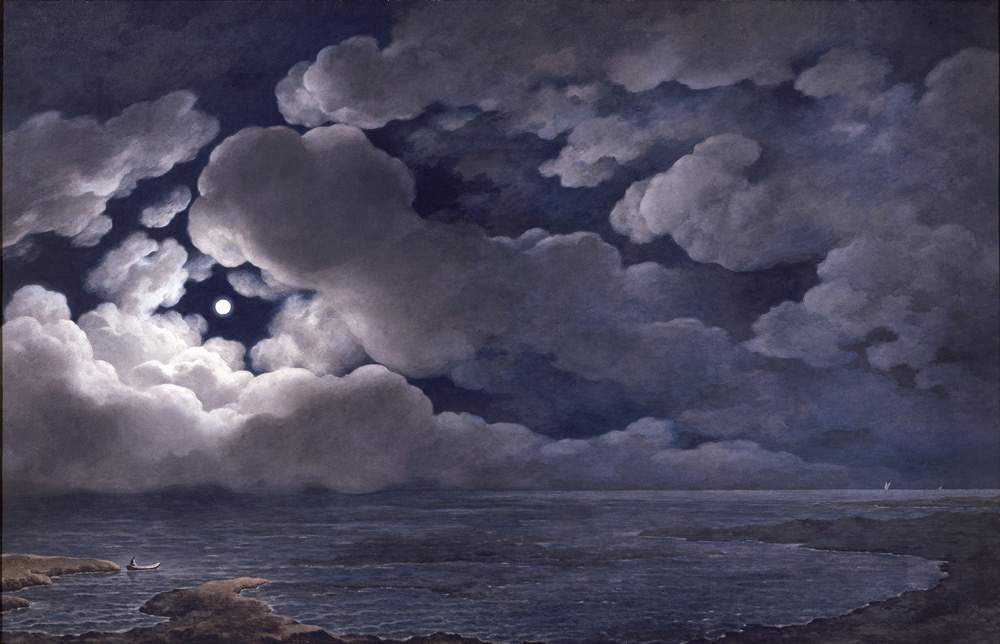 |
| Milan, here's the big exhibition on Italian Romanticism: Hayez and colleagues in the company of Turner, Friedrich and others. Photos |
Warning: the translation into English of the original Italian article was created using automatic tools.
We undertake to review all articles, but we do not guarantee the total absence of inaccuracies in the translation due to the program. You can
find the original by clicking on the ITA button. If you find any mistake,please contact us.
